
by Naomi | Aug 29, 2016 | Creative Life
It’s time for the Writerly Play Library, one of the most powerful–and most often forgotten–rooms.
If you’re joining this series mid-stream and wondering what in the world the Writerly Play Library is, you might find it helpful to start at the beginning.
Out of the five mental spaces in the creative landscape of Writerly Play, the Library is the one that has made the most difference in my creative development. Sometimes people have difficulty distinguishing between the Writerly Play Workshop and the Writerly Play Library. If that’s true for you, not to worry! In fact, I recommend installing a rotating bookcase between the two. Unlike the distance needed between the Writerly Play Studio and the Workshop, the Library and the Workshop are close neighbors, and their tools inform one another.
If the rooms are so closely related, why not knock the walls down and make them one? In this case, the separation is a reminder. In the Workshop, we look closely at our own work. We analyze what works and doesn’t in our own projects. We find areas of growth. But, what then? It’s time to pass through to the Library. We need to study masterworks, analyze what’s working and why, and then reverse-engineer success.
In the Library, you’re invited to study masterworks in many genres—analyzing, identifying strengths, and applying what you learn to your own work.
Like in our neighborhood libraries, we’re likely to start with the most familiar stacks. Maybe our favorite area of the Writerly Play Library is a shelf filled with books like ours. Remember to follow your curiosity. Unexpected connections can spark entirely new ways of thinking. Study sculpture, paintings, performances, and photographs. Find insight in the rhythm of a tango for the structure of your narrative poem. Find tone in a pen-and-ink sketch to try in your next script.
What type of doorway will invite your curious, investigative self out to play? Although the Workshop is an important entry point for the Library, you’ll want to install passageways between the other rooms and the Library, too. No matter what kind of obstacle you’re facing, the Library holds inspiration that can help you move forward. Design your doorways, and then choose one, and come inside.
Look around. Libraries come in all sizes and styles. How does yours look?
Do you have floor-to-ceiling bookshelves? Does it look more like a museum? Maybe it’s not a room at all, but rather a rambling building filled with performance spaces, listening rooms and study nooks.
The more you engage with Library thinking, the more you’ll push beyond your current skill level and into new territory.
The core skills in the Writerly Play Library include:
-
Choosing a Lens
-
Picking a Mentor
-
Finding Patterns
-
Identifying Strengths
-
Reverse Engineering
-
Personalizing Strategies
In order to play to your strengths while thinking in these ways, what tools, strategies or supplies ought to be in your Library? What tried-and-true strategies do you have? What kinds of tools or activities would you like to seek out?
Add to your toolkit or list. And if you’d like to explore some additional possibilities, here’s my recent list of Library tools and strategies.
How do you tend to use your Writerly Play Workshop and Writerly Play Library? Do you keep the door open between them? Like so many others, do you tend to forget the power of the Library? Are there Library resources that you haven’t yet used, but that you’re curious to examine more closely?
We have only one room left in The Nuts and Bolts of Writerly Play. That’s not to say that you or I won’t discover additional rooms in the future. The beauty of a loose framework like Writerly Play is that there’s always room to explore and grow. Tomorrow, we’ll make our way to the Writerly Play Cafe. See you soon!
SaveSave
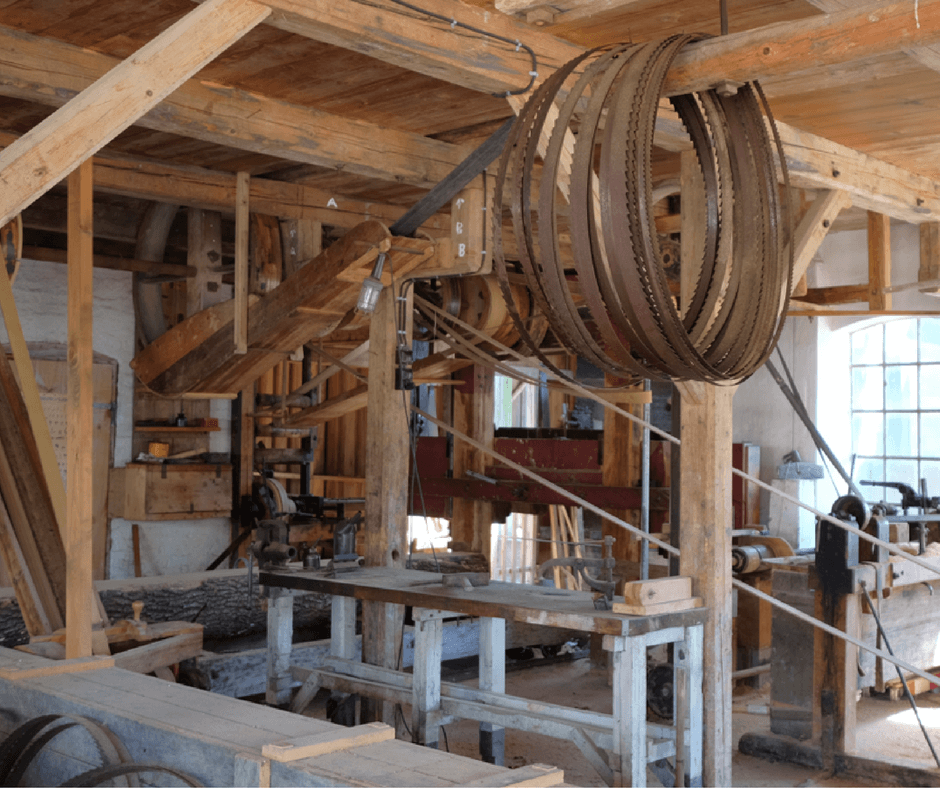
by Naomi | Aug 28, 2016 | Creative Life
Today, we’re on our way to the Writerly Play Workshop.
If you’re joining this series mid-stream and wondering what in the world the Writerly Play Workshop is, you might find it helpful to start at the beginning.
If you’ve been reading along, you’re well aware that the Writerly Play Workshop is another of five mental spaces in the creative landscape of Writerly Play. I find it helpful to think of the Workshop in juxtaposition to the Studio. In fact, the Studio and the Workshop were the initial reason I realized I needed Writerly Play in the first place.
In the Writerly Play Workshop, you’re invited to think critically—developing ideas, revising, and practicing skills.
When I spend too much time in the Writerly Play Studio, my ideas spiral out of control, leading me into intriguing, but often illogical territory. When I spend too much time in the Workshop, my work bogs down under the weight of my critical eye. When I start wondering why I’ve poured my heart and time into a project that I’m starting to despise, I know I’ve been in the Writerly Play Workshop too long.
However, the even more disastrous situation for me was that I had knocked out the wall between the two rooms. My inner critic had clear access to throw darts at my idea balloons. In retaliation, my wild creativity tangled my outlines into rats’ nests. Something had to be done.
That’s why I recommend that you firmly close your Studio door, and march down the hall at least three or four doorways before you choose the best place for your Workshop. You need to be able to move between the rooms, but there should not, not, not be a trapdoor between the two.
So, what kind of doorway will invite your logical, analytical self out to play? Maybe you need a sleek fingerprint keypad, or a rubix cube puzzle lock. Choose the doorway that’s best for you, and then move on inside.
Look around. What gives your Writerly Play Workshop structure and that can-do feel?
Is it a wood shop filled with power tools? A crime-scene lab fit for Sherlock Holmes? Maybe you have a diagram wall, a microscope, a storyboard, or index cards, scissors and tape.
Even if your Writerly Play Workshop is filled with sawdust and other evidence of hard work, it still ought to feel organized. Here, you want to feel clear-minded enough to focus on one problem at a time. You want to feel patient, attentive, and most of all, optimistic. You’ll be thinking analytically, poking at your ideas, moving them around, and finding connections and holes. Optimism is important so that you can look with clear eyes for elements of your project that need further attention. If you don’t believe fully that you’re capable of finding solutions for any problems you uncover, you’ll either avoid the painful truth or turn inward with harsh criticism. Neither of these stances help us in making our best possible work.
The more you engage with Workshop thinking, the more well-crafted your work will be.
The core skills in the Writerly Play Workshop include:
-
Mapping a Plan
-
Structuring Ideas
-
Observing Closely
-
Practicing Strategies
-
Revising and Rethinking
-
Fine-Tuning
In order to play to your strengths while thinking in these ways, what tools, strategies or supplies ought to be in your Workshop? What tried-and-true strategies do you have? What kinds of tools or activities would you like to seek out?
Add to your toolkit or list. And if you’d like to explore some additional possibilities, here’s my recent list of Writerly Play Workshop tools and strategies.
What do you notice when looking at the Studio and the Workshop in juxtaposition? Do you have enough distance between these two mindsets in your creative process? Are there areas of potential growth for you in developing skills in one space or the other?
SaveSave
SaveSave
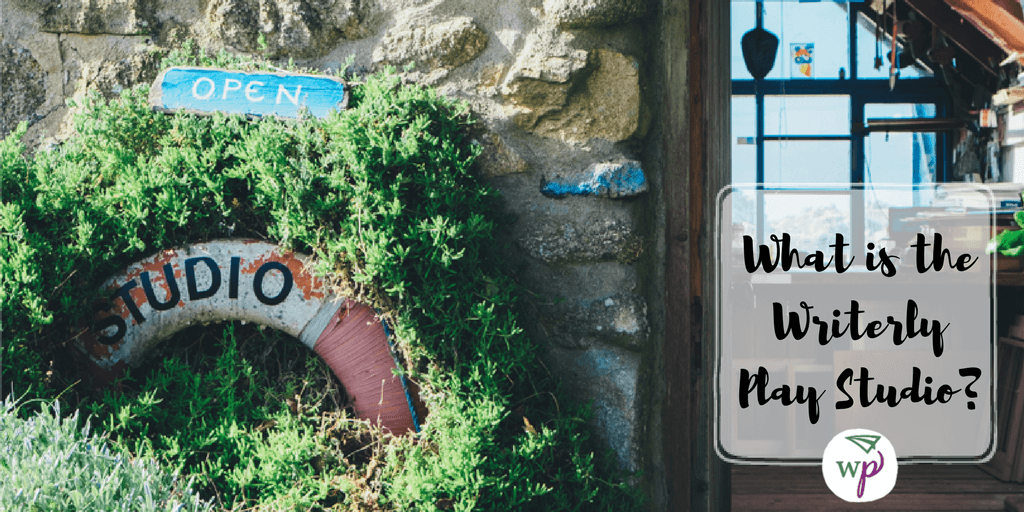
by Naomi | Aug 27, 2016 | Creative Life
We’re on to the Writerly Play Studio.
If you’re joining this series mid-stream and wondering what in the world the Writerly Play Studio is, you might find it helpful to start at the beginning.
As you recall, the Studio is another of five mental spaces in the creative landscape of Writerly Play. Notice I didn’t say “the second of five spaces.” Instead of thinking of these rooms as a sequential path, keep imagining them as rooms in a house. You can pop in and out of them whenever you like, following the needs of your creative process.
In the Writerly Play Studio, you’re invited to think expansively—brainstorming, improvising and experimenting.
Whenever you feel lost, pause and ask yourself: What kind of thinking have I been doing? Diagnose the problem. Have you been bouncing from room to room? If so, you might need to lock yourself into one room and stay put. Or, if one of your rooms has gathered cobwebs, maybe you need to visit that space and see your project with fresh perspective.
I suggested that you build a spiral slide from your Attic to your Writerly Play Studio. You’ll probably want playful entry points from other rooms, as well. What kind of doorways will invite your expansive, playful self out to play? If you need to revise or add to your entry points, make the necessary changes. Then, picture yourself zooming into the most colorful of the Writerly Play spaces.
Look around. How does your Writerly Play Studio look and feel?
Is it a black box theatre, an empty slate that you can reinvent each time you enter? A messy art studio full of paints, pastels, and clay? Maybe you have fuzzy dice, an oversized game board, a swing set, a white board, or stacks of post-its.
Your Studio should feel over-the-top fun. Here, you need to feel safe enough to say that most daring of small words, “Yes.” Yes to looking silly, to improbable ideas, to wild-hare possibilities. All ideas are welcomed here because the more ideas we welcome, the more often the elusive, rare ones will join the party. An safe, experimental, energetic environment will invite your spontaneity–your creative genius–out to play.
The more you engage with Writerly Play Studio thinking, the more innovative your work (and life) will be.
The core skills in the Writerly Play Studio include:
-
Loosening Up
-
Improvising
-
Brainstorming
-
Thinking Visually
-
Stretching Ideas
-
Drafting
In order to play to your strengths while thinking (and playing) in these ways, what tools, strategies or supplies ought to be in your Studio? What tried-and-true strategies do you have? What kinds of tools or activities would you like to seek out?
Add to your toolkit or list from yesterday. And if you’d like to explore some additional possibilities, here’s my recent list of Writerly Play Studio tools and strategies.
We’ve visited two rooms so far. Do you have a sense for which of the two is more comfortable for you? Any new insights about your style, or your creative process?
Tomorrow, The Nuts and Bolts of Writerly Play focuses on the Workshop. See you soon!
SaveSave
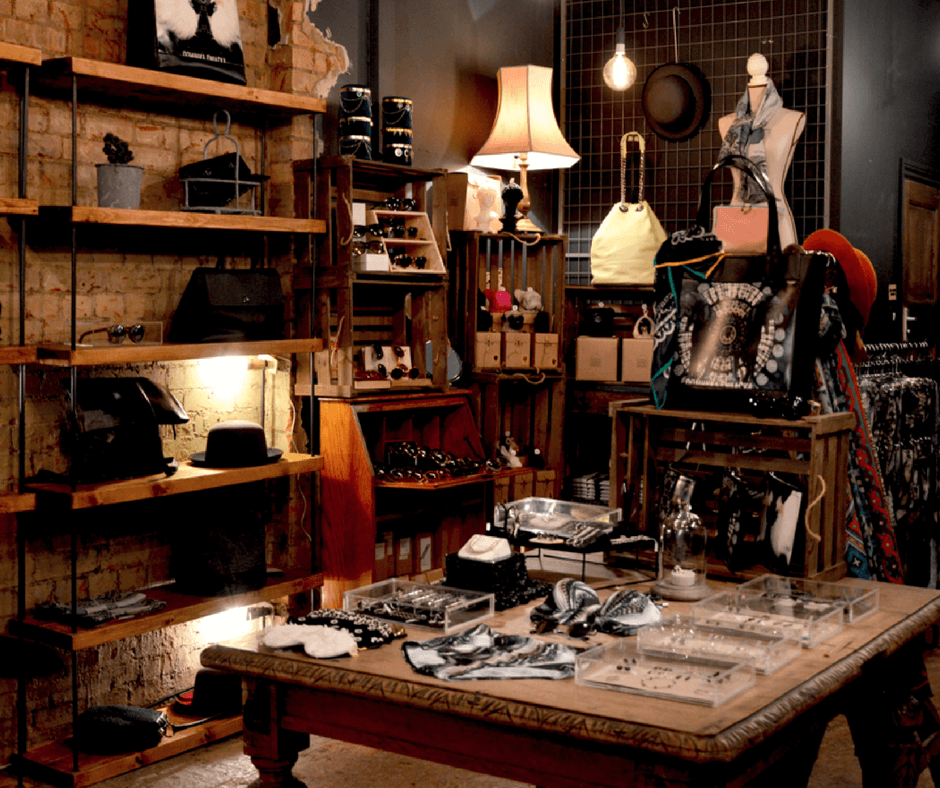
by Naomi | Aug 26, 2016 | Creative Life
Today, let’s explore the Writerly Play Attic.
As a reminder, the Attic is one of five mental spaces in the creative landscape of Writerly Play. Like corners in elementary classrooms, these spaces help us focus on the task at hand–in our case, thinking tasks. We can fill these spaces with supplies and checklists, but the way each space feels matters most. A book corner feels different than a science corner. Beanbags and bookshelves invite our cozy, quiet selves out to play, while test tubes and lab glasses speak more to our curious, analytical selves.
In the Writerly Play Attic, you’re invited to think reflectively—collecting ideas, asking questions, and discovering personal connections.
If you’re joining this series mid-stream and wondering what in the world Writerly Play is, you might find it helpful to check out the first two posts.
What kind of staircase did you use to climb up into the Attic yesterday? A ladder? A spiral staircase? A rope ladder? What kind of ladder would invite your quiet, mindful, reflective self out to play? If you need to revise your entryway, make the necessary changes. Then, picture yourself climbing up into your space.
Look around. What can you already picture in your Writerly Play Attic?
Do you have a window seat next to a thick, paned window? A Narnia wardrobe stuffed full of familiar and forgotten items? Maybe you have a yoga mat, a writing desk, wind chimes, scented candles, or twinkle lights.
Remember: we’re creating a space with a specific feel–for YOU. There is no right-and-wrong rulebook for items you’re allowed to keep in your Attic. We wouldn’t tell students not to keep how-to books in the science corner because books belong in the reading corner. In the same way, try not to issue unhelpful rules in your mental spaces. If you could use an easel and paints in every one of your spaces, by all means, scatter those easels around.
Actually, this point of potential confusion takes us straight to the heart of what the Writerly Play rooms are meant to do. If painting is sometimes a way for you to reflect, and other times a way for you to brainstorm, and other times is a way for you to collaborate, it’s possible that sometimes your brain is trying to do all three at the same time when you pick up your paintbrush.
Surrounding your Attic easel with photographs, keepsakes, and a quiet, peaceful environment will cue your mind to focus and pursue Attic types of questions.
What matters to me in this piece?
What past experiences might inform this project?
What physical or mental clutter is in my way, and how might I clear a new path?
The more you engage with Attic thinking, the stronger your personal, mindful, reflective set of creativity skills will be.
The core skills in the Writerly Play Attic include:
- Clearing Clutter
- Collecting Ideas
- Sorting Ideas
- Asking Questions
- Finding the Heart
- Clarifying Goals
In order to play to your strengths while thinking in these ways, what tools, strategies or supplies ought to be in your Attic? You may have some tried-and-true ones you can add right now. You might also have a wish list. What else might stretch you in new directions, or take you deeper into your work?
Is your mind filling with ideas and questions? And if so, where should you start?
These are mental spaces, but making them tangible will strengthen their helpfulness in your creative process.
You might:
-
Use a shoe box to collect your Writerly Play tools. Inside, separate out the items for each room in smaller boxes or bags.
-
Create a collage or mind map for each room.
-
Design a set of cards for each room with strategies, reminders, checklists and quotes.
-
Or, if you only have three minutes right now, create a new list in your favorite note-taking tool, and do a quick brain dump. As far as the Attic goes, what tools do you have? What tools do you need?
I treat my wish list as a scavenger hunt, and invite you to do the same. You’ll find that ideas you tried in the past are newly useful as you start to organize them into specific workflows (or, thinking flows). You’ll see when you have an overwhelming amount of tools for one task and none for another. Maybe it’s time to weed tired ideas out. Or maybe you’d enjoy cycling through strategies like you do with summer and winter clothes.
Possibilities are everywhere–in creativity books, on podcasts, on Pinterest. You probably won’t be surprised to find that strategies and tools for the rooms are also a regular feature on this blog. If you’re curious, check out the most recent Attic tools I’ve personally explored here.
SaveSave
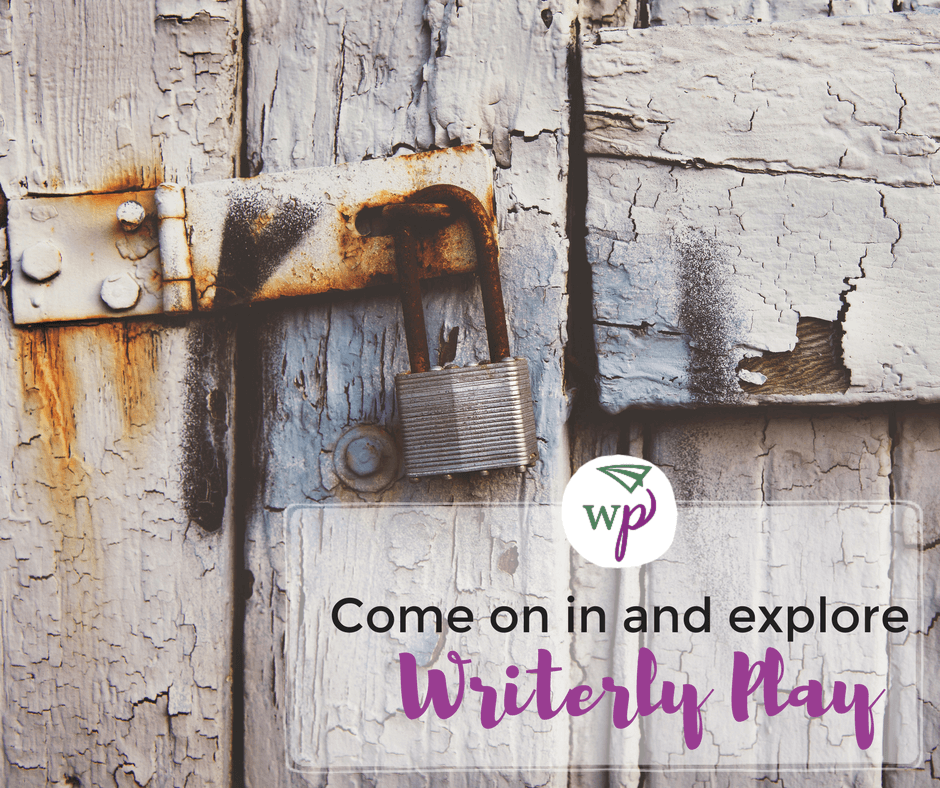
by Naomi | Aug 25, 2016 | Creative Life
The Who, What and Where of Writerly Play
Writerly Play helps us develop our creativity by tapping into the power of story and the addictive momentum of games.
While studying improvisation with Joyce and Byrne Piven, I expanded my understanding of what a game can be, and also what it can do. A game experience has a beginning, middle and an end. As storytellers, when we play with a narrative arc in mind, a game becomes more than a series of moves. We’re part of a collective experience that builds to an unexpected climax, and then resolves with a satisfying flourish.
In order to participate in a narrative game, we need three touchpoints. WHO are we in the game? WHAT is our objective? WHERE are the boundaries as we play?
First, the WHO.
By looking at ourselves through the lens of creative archetypes, we gain insight about our gifts and blind spots. Which archetypes are most like us? Which are least like us?
Points of friction offer interesting insights. Perhaps we fit into one archetype nearly all the time, except for during moments of high stress. Might we make the most of that tendency and make the most of that alternate role? Or, should we stop and remember to tap into our creative gifts rather than try to problem solve with ill-fitting strategies? The point is not to force ourselves into boxes, but rather to use the structure of the game to unlock better strategies for playing.
If you’d like to explore your creative archetype, I encourage you to take this quiz. At the end, don’t miss the cheat sheet with strategies curated for your style.
Next, the WHAT.
Any creative project will do. We stretch our creativity by mindfully engaging in the creative process. Remember, you aren’t only learning an art form. You’re also learning how to think creativity, skills that will serve you no matter what art form you tackle next.
The WHERE is how Writerly Play truly shines.
Writerly Play invites you to picture the creative process playing out in a series of mental rooms. We all know the power of corners in a Kindergarten classroom. Each corner is equipped with tools to put us in the right frame of mind for the activity at hand.
Picture yourself standing in front of a gate.
It’s an intriguing gate—one that whispers of mysteries beyond. What does your gate look like? Take in as much detail as you can. Where are you? In a busy city? In a thick forest?
Beyond the gate is a building. When you were a kid, did you ever stumble across a place that you immediately claimed as your own? Maybe it was a hidden space carved into a hedge or a room that no one used. The point is, every once in a while, a space invites us in—it feels safe. It invites us to play. This building is that kind of space. It’s your hideout. You’re allowed to build forts here and slide across the floor in your socks.
Open the door and go inside.
Absorb the look and feel of the place. This building—your Writerly Play hideout—is a setting for your creative exploration and growth. While your space will have its individual quirks and surprises, there are also a few rooms you’re sure to find.
-
Climb up to the Attic, a room filled with artifacts from your life experiences, and tools to help you savor, sort, and reflect on them.
-
Down a spiral slide, you’ll find the Studio. This imaginative, colorful space invites you to set your analytical mind aside so you can draft, sketch and improvise.
-
Across the hall and down a few doors, far enough away to keep the sawdust from choking out your playful experience, is the Workshop. Here, your analytical mind stars, as you do the hammer-and-nails work of shaping and revising your work.
-
Sometimes, you hit a wall and you need inspiration and wisdom from those who have gone before you. That’s why there’s a secret passageway from the Workshop to the Library, where you’re surrounded by the work of master artists, be they authors or painters or violinists.
-
In the back garden, you’ll find a Cafe, where you can connect with your peers and your audience. Here, you receive feedback and use it to fuel your growth.
I know you’ll want to ramble around your creative space and see what you can find in the nooks and crannies. Explore away, and then come on back tomorrow for the next post in The Nuts and Bolts of Writerly Play. We’ll climb back up into the Attic together and take a closer look.
SaveSave
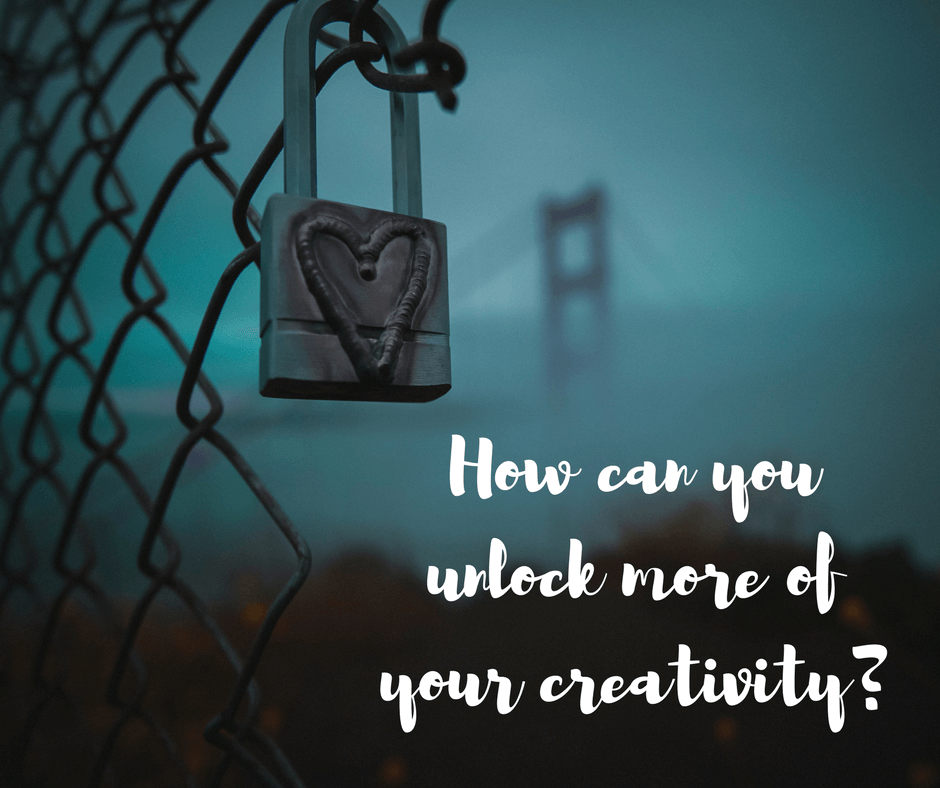
by Naomi | Aug 24, 2016 | Creative Life
Creativity isn’t a superpower some people have and others don’t. Creative thinking is a habit–actually a collection of habits–developed over time. Writerly Play is a toolkit to help you understand and master those habits. Before we dive into the specifics of Writerly Play, let’s explore where this toolkit comes from and why it is necessary.
Imagine how you might learn to play the guitar.
You could pick the guitar up and strum. Practicing intuitively, you’d pick up a mix of good and bad habits as you went. Ultimately, you’d reach a plateau. It would be all too easy to believe yourself a mediocre player. You might give up, or settle for your limited skill set.
From the outside, we can see the mistaken belief and clear solution. Musicians need to learn the building blocks of their instruments. The problem isn’t that you are a poor player, but rather that you learned in the wrong way.
We need to learn the building blocks of creative thinking.
Like our guitar player, most adults have a few highly developed creative skills, counterbalanced by at least one blind spot. This blind spot is the source of much frustration. In mild cases, it can cause annoying creative blocks, but more often, we point to our blind spots–or at least the trouble caused by those blind spots–as proof that we aren’t creative, or aren’t creative enough.
To this lie, I emphatically shout, “UNTRUE!” Untapped creative energy festers. It becomes criticism, frustration, and even destructive action. On the flip side, when individuals find creative flow, families, schools, neighborhoods, and businesses are transformed.
For as long as I can remember, I’ve been fiercely pursuing this question: How can I unlock more of my creativity? I’m not one to moon around wishing I were more creative without taking action. Whenever I feel that pang of jealousy–you know the one, it invariably strikes when we see a seeming genius–I ask myself, “What are they doing that makes them creative?”
I set out to understand what creative people do.
Throughout my life, I’ve trained as an actress, a musician, a dancer, a director, a visual artist, an author, an educator and an entrepreneur. I’ve taught those subjects, as well. Teaching forced me to break art forms into respective skills. Over time, I began to see an important pattern. Each art form has its own language and key skills, but success in any medium requires mastery of a set of foundational abilities.
Creativity involves agility in these skills, as well as the flexibility to move fluidly between them. Or, put another way, highly creative people know what kind of thinking they need to be doing at different stages of the process. Those seeming geniuses move between modes of thinking intuitively. What excellent news for the rest of us! In order to develop our creativity, we simply need to build this mental toolkit and learn how to use it.
Remember our guitar player? Unlearning bad creative thinking habits usually requires a frustrating month or two. What used to come easily takes focused mental effort.
We can drill, train and use our determination to push through. Or, we can play. Games offer the opportunity to struggle, but in a way that appeals to our spontaneous, joyful spirit. That’s what Writerly Play is—a framework to help you individualize, map and problem solve your creative process. Like a choose-your-own adventure story or an improv game, it has a loose structure that invites you to come on in and play.
Before we move on, reflect on your own creative experiences.
When have you felt most successful with your creative thinking? When have you felt stuck? Do you see any patterns? Jot down your thoughts or create a small mental collection.
In part two of The Nuts and Bolts of Writerly Play, we’ll dive in and explore the specifics of Writerly Play. Then, throughout the rest of the series, we’ll play with the toolkit.
by Naomi | Aug 9, 2016 | Creative Life

It’s all too easy to let the creative well run dry. Life is busy, and deadlines loom, and we think … well, just one more project. I can make it through.
It’s a little like becoming dehydrated. Or overly tired. We don’t realize we have a problem until we slam into our internal wall. Even though we know our creativity requires our caring attention, actually attending to it is a different thing.
This past month, I’ve spent time filling my creative well. I wandered through museums, dug my toes into the sand, hiked to waterfalls, and rested in the shade. I let my mind wander. In May, after a long season of focused work, I had hit a wall of creative brambles. I was absolutely, positively stuck. Now, after a month of following my curiosity, of slowing down to take in my surroundings, I see a path forward.
What an incredible thing–to be totally stuck one month and the next, to be free.
I have a busy life. I’m sure you do, too. For me, the path forward couldn’t be retreating to a cabin in the woods. While I might retreat for a few days, I certainly can’t retreat forever. I needed a way to be creatively healthy in the real world, in my real life. While I was away, I discovered that I already had all the pieces I needed to live in exactly this way. I’ve been exploring them all of my life, and even writing about them. What I hadn’t done was to put them together.
I hadn’t seen the simplicity of the big picture.
We need mental pictures. Many research studies confirm that the way we think affects our outlook and approach, which in turn, affects our circumstances. If our mental picture is scattered, our life will be, too. However, without attention, our mental picture can’t be anything but scattered.
While I was away, I realized I’ve had a powerful mental picture for quite some time, but I haven’t been using it to its full potential. I thought of Writerly Play as an approach to writing, but I hadn’t seen that at its foundation, it is also an approach to creative living in general. In fact, I thought of Writerly Play as so separate, I was keeping one blog about creativity and another about Writerly Play. But as you see, I’ve merged the two. I realize they are one and the same thing.
Writerly Play provides a loose structure within which anyone can play and innovate. Like the best kinds of improv games, it’s only a launching point. Every player will discover a path of his or her own. I’m looking forward to sharing the path as it unfolds in the hopes that my story will urge you forward in your own creative journey. As always, I’ll share resources, strategies and playful tools that I discover along the way. I hope you’ll share your insights and discoveries with me, too.
Here’s to you and your creativity!
by Naomi | May 10, 2016 | Creative Life
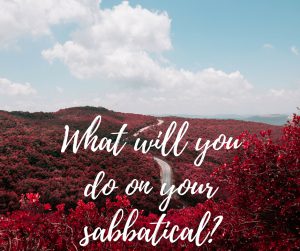
In just a couple weeks, I’ll be taking a sabbatical. The word, from Latin (sabbaticus), Greek (sabbatikos), and Hebrew (shabbat) means “ceasing.” Or in other words, a sabbatical is a rest from work.
Here’s what I’ve noticed. The first question people ask after hearing about my sabbatical is: “What will you do?”
A tempting question, indeed, especially for an artist.
The minute this question is asked, my mind starts to spin. Six weeks with no external commitments! I could go do this, or create that, or learn this, or work on that …
Hmmm.
Isn’t the point NOT to work?
And yet, I can’t picture myself lounging on the couch eating bon-bons. Nor do I think that laying around and binge eating will produce the benefits a sabbatical is meant to bring.
And that brings us to the heart of the thing. Here’s why I want to take a sabbatical in the first place. I want to learn how to be purposeful without being my own personal task master. I want to let the dust settle so that in the quiet, I can observe the path I’ve traveled so far, see clearly where I am now, and glimpse where I’m headed.
Honestly, I’m not sure how to find my way to the quiet.
That quest will be my first task on my sabbatical. I’ll experiment, and see what happens. I’m sure that some attempts will be false starts. For me, work is so tightly woven into play and vice versa. Mindset is a huge part of the puzzle. The reason I’m drawing or playing guitar or hiking is likely more important than the activity itself.
I fully expect to learn all sorts of things that I can’t nail down clearly right now.
I like the idea of a quest. That’s not surprising, I’m sure, to anyone who reads this blog regularly. Maybe my very loose plan should be to take on a quest with three tasks, the first of which is finding the quiet. Wouldn’t it be lovely if I could find a doorway that remained, even after the sabbatical? Like a secret doorway behind ivy, maybe once found, the passage into the quiet could be forever known. That quiet space could be tended and nurtured until it blossomed.
I plan to post one more time before my sabbatical, and then I’ll be away for a while. When I return, I look forward to sharing about my quest, the tasks I discovered, and what I learned along the way.
In the meantime, here’s to you and to your journey.
by Naomi | May 4, 2016 | Creative Life
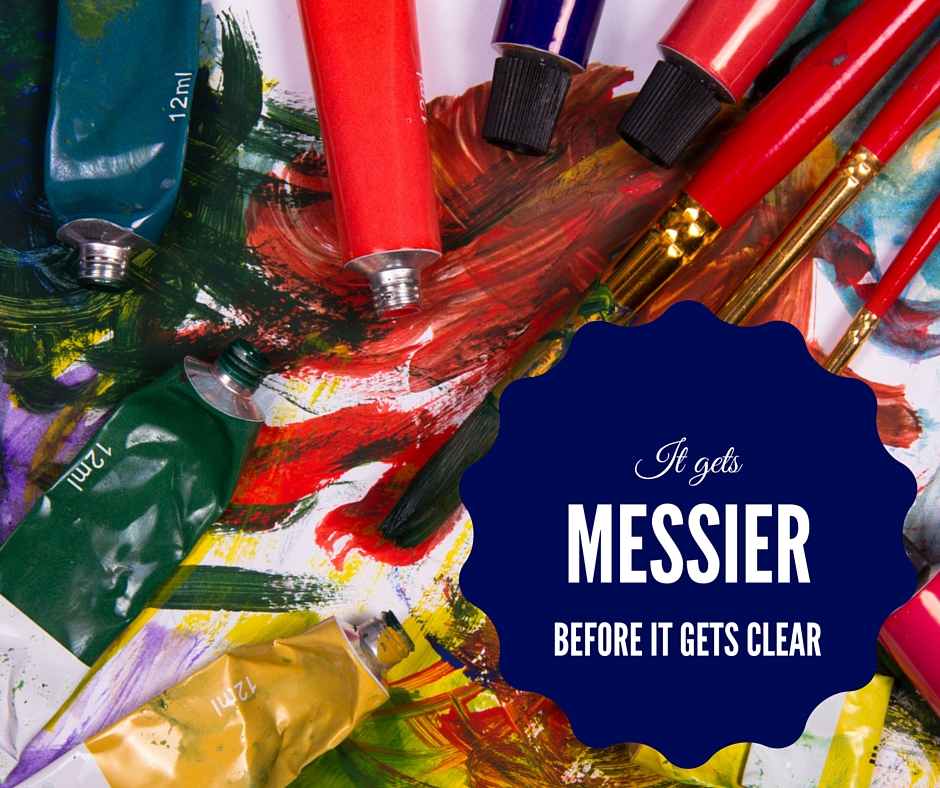
I know it’s happened to you. You have that freak-out moment when you realize that your world is simply too cluttered. You absolutely must–at this very moment–clear out your closet. Or your top desk drawer. Or your car. The trouble is, you’re craving clean and tidy and what you get is a messy pile.
The only way to clear clutter away is to take it out of the dark corners and deal with it.
Recently, I’ve been clearing a lot of things out of dark corners. Whether it’s a physical pile that I’ve pulled out of the closet, or an invisible pile, such as my unwritten task list, nearly every time, I’m hit at some point with fear, sharp and sudden. This pile! I think, throwing my arms up in despair. It might be more than I can handle.
As long as you can’t see the entire pile, you don’t know the distance between where you are and relief. You don’t know what it will take to achieve a clear closet or a clear calendar. The pile tells the truth. Here are the things you’ll have to decide about, and that you’ll have to deal with, before this mess is cleared up.
But we know that on the other side of the mess is the thing we’re craving. Clarity.
So usually, at least on good days, we push past the fear and tackle the pile. I’ve noticed the following questions have been helping me brave the rather large piles I’ve been tackling lately. Maybe they’ll spark some momentum for you, too.
- What problems do I see?
- I stack items in the pile into distinct issues. This approach requires mentally transforming the items from “stuff” into the problems they represent. Maybe a messy pile of notes points out that I need a better note taking system. Or a stack of mail might remind me that I need a holding space and reminder system for bills.
- How can I hide all the problems but one?
- It’s easy to get distracted. Once everything is sorted, I look for ways to hide the mess to give my brain clear thinking space. Sometimes I put the piles in boxes so I only have to deal with one problem at a time. In the case of tasks or projects, I will sometimes write each project on a separate piece of paper. Then, I’ll make decisions about what needs to happen with that particular project. Maybe it needs to go into my to-do list. Or maybe there are a lot of steps to a project and what I need is to calendar it out in stages or put it into a project management tool.
- What solutions might I try?
- Once I’ve focused on an issue, I’m tempted to search obsessively for the perfect solution. However, the ideas that result from the question of what I “might try” are usually more creative than the ones that show up when I ask myself how I will “fix this.” Fixing feels set in stone and often stumps me.
Clutter, whether it is physical, mental, or emotional, crowds out creativity. If we allow the messes to stick around in the dark corners, eventually, our creativity is struggling to thrive in a sunless, oxygen-deprived space. However, when clutter is our creativity block, dealing with the situation is challenging. As we take out the mess, the trouble explodes across our physical or internal space. A flood of emotion is quick to follow. In these moments, the thing that helps me most is remembering that it’s not just me. I’m not the only one who who sets out to deal with some clutter, and finds that what’s required is determination, resilience and courage. All because of a pile!
If your closet, to-do list, or office is in need of some spring cleaning, remember … when push comes to shove, you’re not alone. And you CAN do this, no matter how it feels in the moment. Even a mountain can be moved one shovelful of dirt at a time. I’d love to hear your spring cleaning stories, be they survival tales or monumental successes. Share away below, or join me over on Facebook or Twitter to chat.
SaveSave
by Naomi | Apr 26, 2016 | Tools & Apps
My playlist is an eclectic collection of tools that help me approach my work as play. Here’s another of my favorites, the Curiosity app, which sparks new ideas and connections.

Object: Making learning a regular habit with the Curiosity app.
What Didn’t Work: Trying to remember to take time daily to learn something, spending the time I might have spent learning searching for quality material, learning only about topics I sought out rather than material that might stretch beyond my comfort zone
My Aha! Moment: When I visit classrooms, I love to read the list on the board of all that’s in store for the day. As students arrive in the morning, they stop, read the list, smile over the parts of the day that appeal to them, make a face over the parts that will be a challenge, and after they’re done, they nod. The day’s work is accepted.
Honestly, I miss having a teacher lay out a learning plan for my day. Don’t get me wrong, I love the post-school freedom choose my areas of passion and focus. But I miss the richness of being introduced to ideas and topics I wouldn’t naturally seek out. Divergent thinking is an essential part of creativity. When my exploration narrows to the areas of my current expertise, I can find myself also feeling stuck.
The Curiosity app provides a few articles each day to stretch your thinking in new ways.
How I Play:
- I have a collection of reading material apps, all organized in one folder on my phone. When I need a brain break, I open the one that appeals most at the moment. Often, I choose Curiosity because I know I’ll learn about something unexpected.
- When I find an article I love, I pass it to Milanote, my new favorite creative thinking and note organization app. Then, I can add the information to a visual idea board that can spark future ideas or connections.
Player’s Notes:
- I don’t know about you, but sometimes when I find an engaging (and helpful) tool like this one, I set a bunch of expectations for myself. Oooh! I think. I’ll add a reminder to my to do list and make sure to check this tool once a week. Then, I’ll truly take advantage of all of this amazing material. I went down that path at first, but when I lightened up and just let this be a fun app to check in with every once in a while, I enjoyed it a whole lot more.
Take it to the Next Level:
- Information can easily go in one ear and out the other. If you find something that catches your attention, find ways to engage with the material. Research a little deeper, or share what you learn with someone else.
What other apps and websites stretch your thinking and spark new ideas for you? I’m always looking for excellent new tools! Share below, or tag me on Facebook or Twitter.











